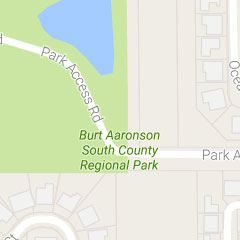Concrete Frisbee
Overview
The Concrete Frisbee Competition offers participating teams the opportunity to demonstrate their knowledge of structural design principles and aerodynamics/fluid flow in the construction of a concrete frisbees. Students will design and build their frisbees with required dimensions, materials and performance specifications.
Objective
The objective of this competition is to design and build a concrete frisbee that conforms to the specifications. Frisbees are to be designed and built to fly in the air.
Eligibility
Each university may have one team with up to four students, one of whom may be a graduate student. Each team will have a captain who is responsible for submitting the frisbee and a paper copy of the technical report during registration. Each team may only submit one entry. Submitted frisbees must meet all design specifications. Compliance evaluation will be conducted at least 24 hours before testing. Team captains will be notified by cell phone if a compliance issue has been identified. Failure to meet a specification requirement will result in disqualification if not remedied at least 1-hour prior to scheduled testing.
Submittals
All technical reports and frisbees must be submitted upon arrival to the conference at the time of registration. Reports must be bound or stapled and presented on 8.5” x 11” paper. Frisbees must have the name of the university clearly visible on the surface.
Electronic version of the Technical Paper is due March 3, 2017 at 11:59 p.m. EST to 2017asce@fau.edu; Submit specimens for inspection upon arrival to the conference at the time of registration.
Dimension Specifications
- The concrete frisbee should be roughly circular in shape, solid, and without any holes. The frisbee must be smaller than a 12” x 12” x 2” box, and larger than an 8” x 8” x 1” box.
- The weight of the frisbee must be less than 3 pounds.
Material Specifications
- The primary composition of the concrete frisbee must be Portland cement. All reinforcement must be non-ferrous materials (carbon and fiberglass mesh can be used). There is no restriction on the choice of aggregates.
- Molds such as an old plastic frisbee, pie pan, or wooden forms may be used.
- Each team is allowed to bring up to two (2) frisbees to the competition. The team must select one frisbee to use prior to beginning the competition.
- Any external reinforcement must not create a shell around the frisbee.
- No coatings (plastics, rubber, glue, impregnating lacquers, etc.) that increase the hardness of the frisbee can be used.
- Creative paint jobs are encouraged.
Technical Paper
The technical paper shall be 750-1000 words in length and consist of:
- Introduction
- Name of University.
- Names of team members.
- Captain’s name, email address, and cell phone number.
- Material Documentation
- Quantity and dimensions of all materials used in construction.
- Description of the construction process including specifications of the mold used.
- Purchase information of all materials. (Include photocopies of the receipts.)
- Design Methodology and Construction
- Explanation of all design assumptions used in the design.
- Discussion of alternative designs considered.
- Discussion of the construction sequence.
- Discussion of any problems encountered and overcome.
- Figures
- CAD plan view with all dimensions to scale.
Appendix. Concrete Frisbee Scoring Summary Sheet (Note: Appendix does not count against the word limit).
Judging
There will be a minimum of three judges for the competition. It will be the judges’ responsibility to evaluate the teams fairly and consistently. The teams will be evaluated based on the criteria outlined in the scoring section. The judges’ ruling will be final.
Scoring
- Aesthetics (10%) - The aesthetics score will be based on uniformity, surface texture, finish, and overall paint job prior to competition. This judgement is subjective and is at the judges’ discretion.
- Weight (20%) - The lightest frisbee will receive the highest points in this category. Each frisbee will be weighed prior to the competition and be compared to the lightest frisbee entry by the following equation: Points for Weight Category = [(Weight of Lightest Frisbee/ (Weight of your Frisbee)] × 20
- Distance Event (30%) - Boundaries will be marked and explained prior to starting the event. Each team will have two (2) opportunities to throw their frisbee, by the same thrower or a different one. The total of the two throws will be counted. Measurement will be taken from the baseline to the point where the frisbee first makes contact with the ground. If the frisbee lands outside the boundaries, or if the thrower’s hand crosses the baseline (fault), the throw will be disqualified. Re-throws are not permitted. Once the frisbee weight is less than 2/3 of its initial weight, or the judges deem the Frisbee to not be in throwable condition, no further throws shall be permitted.
Points for Distance Category = [(Your Team Total Distance)/ (Highest Team Distance)] × 30
- Accuracy Event (20%) - After the distance competition, a fixed target will be placed 50 feet away from the baseline. Each team will get one throw using what remains of the frisbee used in the distance competition. After the frisbee comes to rest, measurements will be taken from the target to the closest edge of the frisbee.
Points for Accuracy Category = [(Shortest Distance to Target)/ (Your Distance to Target)] × 20
- Durability (20%) - The frisbee will be weighed after the competition, and the residual weight will be used to calculate durability. Any frisbee that has less than 2/3 of the original weight after the competition will receive a score of 0 for the durability portion.
If (weight after) ÷ (weight before) < 0.67, then durability score = 0
Points for Durability Category = [(Weight after)/ (Weight before)] × 20
Questions
Send questions to 2017asce@fau.edu. Answers will be posted on the Q&A page.


